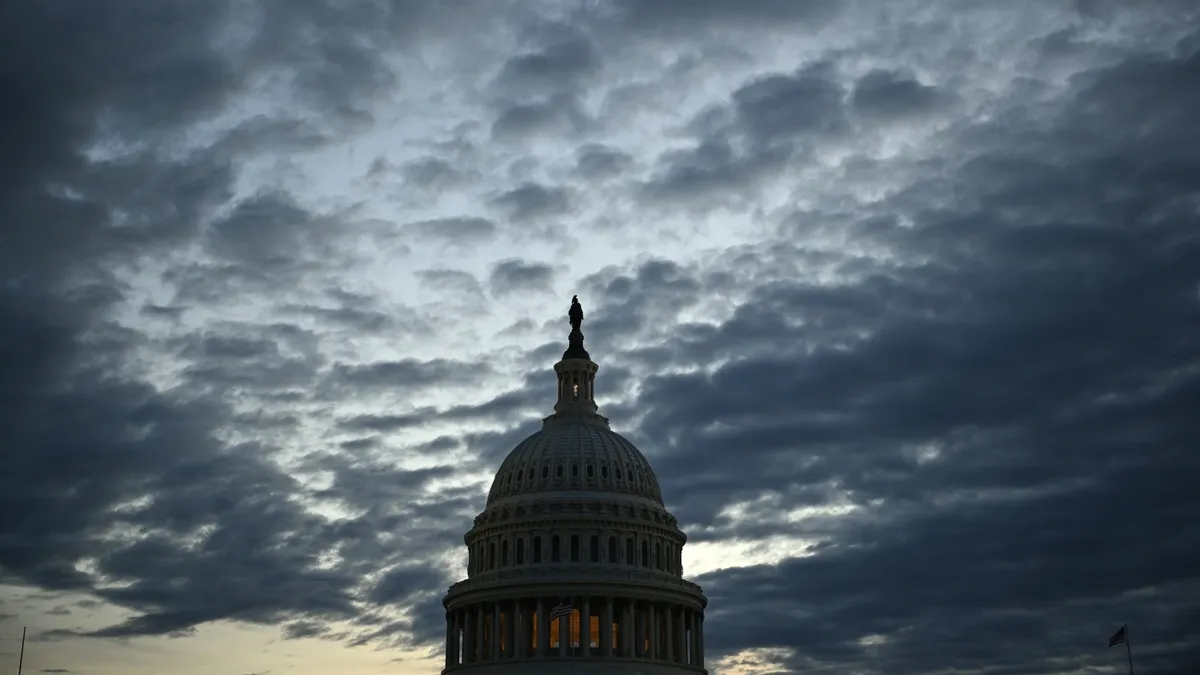
Since President Trump returned to the White House this year, there has been a significant shift in the political landscape, leading to a record number of members of Congress considering their exits. The Republican-led Congress has largely embraced Trump's vision for the country, prompting a wave of announcements regarding retirements and relocations. As we approach the 2026 midterms, a total of nine senators and 21 House members have declared they will not seek reelection, marking a modern record for this stage of the election cycle, as highlighted by an NPR analysis of congressional campaign data since 2017.
As of August 12, the 2026 elections will feature a staggering 470 congressional seats on the ballot. This includes all 435 House seats, 33 regularly scheduled Senate contests, and two special elections to fill the remaining Senate terms in Ohio and Florida. The data regarding congressional retirements and relocations over the last decade reveals that this midterm cycle is particularly striking for the number of Congress members aiming to transition into gubernatorial roles within their states.
Among those making the leap are three sitting senators: Alabama Republican Sen. Tommy Tuberville, Tennessee Republican Sen. Marsha Blackburn, and Colorado Democrat Sen. Michael Bennet. Traditionally, governors have pursued Senate roles, yet this year's trend indicates a reversal of this path, with more members seeking gubernatorial positions. Currently, 12 senators hail from the "former governor" caucus, which includes prominent figures like Virginia Sens. Tim Kaine and Mark Warner, Florida Sen. Rick Scott, and New Hampshire Sen. Jeanne Shaheen, who is set to retire at the end of her term.
Jessica Taylor, the Senate and Governors editor for the Cook Political Report, noted that this inversion in the typical governor-to-Senate pipeline is the highest seen in nearly a century. She attributes this shift to the increasing partisan gridlock that has diminished the effectiveness of Congress. "The Senate used to be the world's greatest deliberative body, but many of those who worked across the aisle have either retired or been defeated," Taylor explained.
This trend toward gubernatorial aspirations carries a notable degree of success. Research from Ballotpedia indicates that 10 of 14 incumbent or former senators have won their gubernatorial campaigns in the past 40 years, compared to only 27 of 56 governors who have attempted to run for the Senate. Additionally, several governors, including popular Republicans Brian Kemp of Georgia and Chris Sununu of New Hampshire, have opted not to pursue Senate races, possibly eyeing future opportunities in the 2028 presidential primaries.
On the House side, there are currently nine representatives—five Democrats and four Republicans—who are considering runs for the Senate, a figure that surpasses those in recent election cycles. Notable candidates include Georgia Republican Reps. Buddy Carter and Mike Collins, who aim to challenge incumbent Democratic Sen. Jon Ossoff, and Alabama Republican Rep. Barry Moore, who recently announced his intention to fill the seat vacated by Tuberville.
Furthermore, eight Republican House representatives are vying for gubernatorial positions. Taylor suggests that a key reason for this trend is the increased visibility and political clout that governors have gained, particularly following the COVID-19 pandemic. "We've seen a lot of governors, especially in the wake of COVID, who have managed to raise their profiles through media exposure," she observed.
Examining departures in the Trump era reveals a striking statistic: out of the 535 lawmakers who served in the 115th Congress at the beginning of Trump's first term in 2017, just over half are no longer in office. All current members announcing their retirements from the 119th Congress have originated from this class of lawmakers. In total, nearly 900 individuals have served in the House or Senate during the Trump and Biden administrations, showcasing a significant turnover.
Noteworthy departures include lawmakers who resigned to join the presidential administration, such as former Oklahoma Republican senator-turned-NASA-administrator Jim Bridenstine, as well as former senators-turned-vice presidents Kamala Harris and JD Vance. The most common reasons for departing Congress during the Trump era have been retirement, election losses, or transitions to different offices.
As we look ahead, the political climate suggests that more lawmakers may choose to exit Congress. During Biden's presidency, more Democrats left Congress than Republicans, while the opposite occurred during Trump's first term. The current political dynamics, driven by Trump's assertive influence over Congress, could motivate hesitant Republicans to consider stepping back from political life.
"Even if you're in the majority, you have to continuously fight," Taylor pointed out. "Moderate Republicans, in particular, may find it exhausting to navigate the challenges posed by Trump and his allies." With the upcoming August recess providing lawmakers a chance to gauge their constituents' sentiments and the political landscape, the potential for further departures remains high as we approach the crucial 2026 midterms.